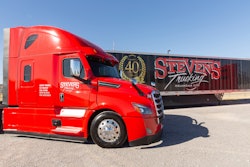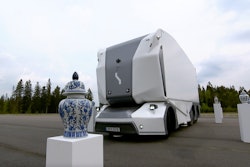Decision makers at fleets across the U.S. are tempering eagerness to adopt new technologies, according to a recent survey, but while their near-term readiness may have diminished due to the current business climate, adoption remains an eventuality.
A report from human behavior and analytics advisory firm Escalent shows that market readiness for adoption of technologies decreased from 2020 to 2021, but on a promising note, the 2021 index was above 2019.
According to Fleet Advisory Hub’s Fleet Technology Index, fleets are least eager to adopt artificial intelligence, battery electric vehicles and data analytics.
Escalent’s Fleet Advisory Hub, an insights tool designed to explore the needs, expectations and emotions of commercial vehicle and fleet decision-makers, looks at the status of expectation and readiness to adopt across eight categories, taking into consideration the perceptions of the current business environment.
According to Fleet Advisory Hub’s Fleet Technology Index, fleets are least eager to adopt artificial intelligence, battery electric vehicles and data analytics, which fell by 4.5, 4.4 and 3.6 points respectively from 2020 to 2021 but were up by 1.6, 4.9 and 2.2 points respectively in 2021 compared to 2019. From 2020 to 2021, eagerness to adopt telematics fell 2.1 points while autonomous vehicles and blockchain both fell by 2 points, and drones and mobility service fell by 1.4 and 1.2 points respectively. Desire to adopt telematics was up 6.9 points from 2019; autonomous vehicles up 4.5 points; blockchain up 1.2 points; drones up 0.9; and mobility service up 0.1 points.
Lucas Lowden, insights consultant for the automotive and mobility practice at Escalent and program lead for Fleet Advisory Hub, said a variety of factors related to today’s business climate are affecting these strategic investment decisions, from rising fuel prices impacting the cost of goods sold and transportation of those goods to vehicle supply constraints from the ongoing microchip shortage limiting new vehicle inventory and driving up the cost of used vehicles as well as societal elements contributing to a challenging staffing environment.
“In the broadest sense, these businesses are having to focus foremost on managing the day-to-day operations in a dynamic, challenging environment – the likes of which many of us have not experienced previously – more so than getting ahead for the future,” he said. “What was particularly notable is that, despite the dip we observed, all scores remained higher than the baseline data from 2019 in which our study pre-dated many of these disruptive factors. There is reason for optimism in this sense.”
Lowden said while all businesses are feeling the impact of these environmental elements, it is a more trying time for smaller fleets than larger ones as larger fleets have more scale in terms of people and capital to stay the course with technology investments.
While smaller fleets are still interested in technology, they have to prioritize their time and money.
Because of that, Cole Stevens, vice president of sales at Stevens Trucking Co., said he expects larger fleets to remain at the forefront of technological investment.
“The really large carriers – the J.B. Hunts, the Schneiders, the Werners, the Knight-Swifts – those carriers, I think, are going to make huge technology investments because they have the money to do so and they're trying to optimize their entire business and the entire supply chain, where someone like us is probably going to be more modest because we're kind of in that middle,” Stevens said. “We're not the last to adopt, but we're also not the first. The smaller owner operator fleets with five trucks or under, which makes up 92% of fleets, probably aren't going to invest as much.”
The survey, which was taken among 1,031 decision makers, included 50% micro fleets (one to five units); 30% small fleets (six to 50 units); 9% medium-size fleets (51 to 500 units); an 2% large fleets (500 or more units).
Stevens said his company – a medium-size fleet – typically reinvests in technology during slower economic times like these.
“Usually when things are gangbuster with how much demand there is and freight tonnage and the number of tenders and the volume, you’re putting out fires all day … so sometimes you can overextend yourself, which creates inefficiencies,” he said. “You hope that, obviously, the prices are good enough to cover some of those inefficiencies, but when things start to trend downward, you try to take the money that you've made during the boom cycle and reinvest it in technology and re-optimizing your fleet and your productivity and get back to that really efficient machine.”
Orbcomm Senior Vice President of sales Chris MacDonald said those investments are what keeps those companies afloat during hard times.
“When financial and business climates become difficult or inconsistent, the fleets that have invested in telematics and data analytics solutions tend to persevere and thrive compared to fleets that have not deployed this technology,” he said. “By streamlining their operations around the insights they gain through the power of data, these fleets are able to maximize their profitability, scalability and long-term ROI.”













